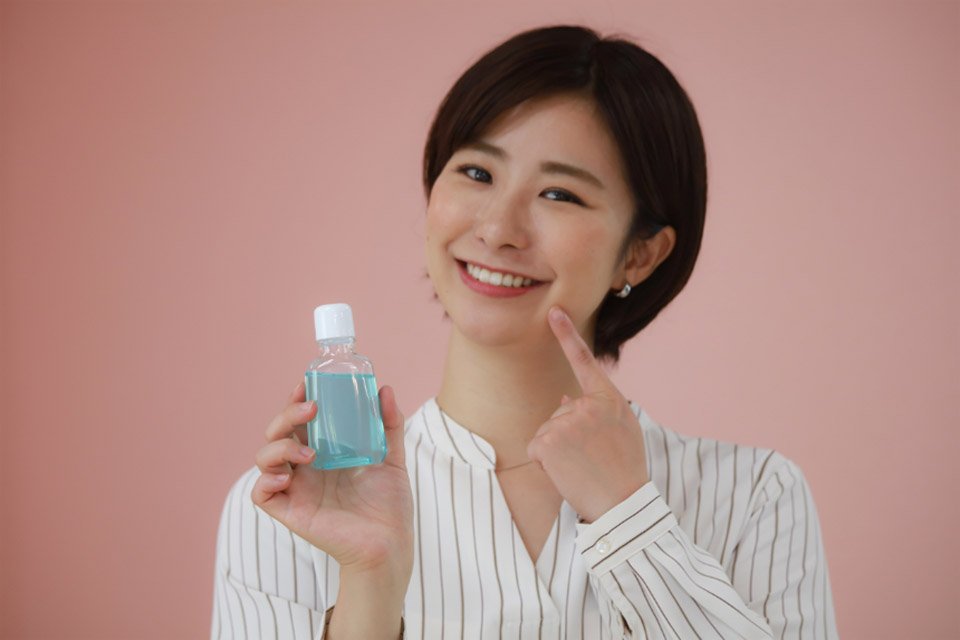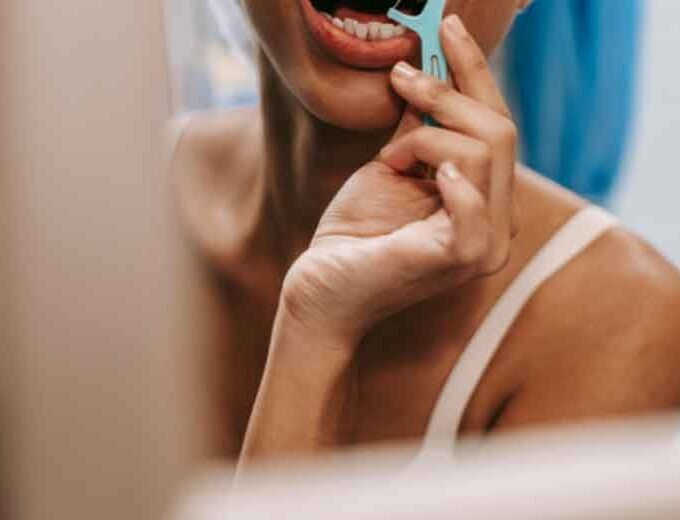Most of us are familiar with the dynamic duo of brushing and flossing. But there’s a third player in the oral hygiene game that often doesn’t get the attention it deserves: mouthwash. Though sometimes seen as just a breath freshener, mouthwash can be a powerful ally in your oral care routine. This comprehensive guide will explore the benefits, types, proper use, and considerations when integrating mouthwash into your daily dental care.
The Main Benefits of Mouthwash
According to statistics, more than 199.56 million Americans used mouthwash. It can offer several benefits as part of a comprehensive oral hygiene routine. It’s designed to reach areas of the mouth that brushing and flossing may miss, helping to reduce the risk of cavities, gum disease, and infection. Here are some potential advantages of using mouthwash:
Reduces Bacterial Load: Mouthwash is designed to combat the bacteria that brushing and flossing might miss. It reaches between teeth and into the crevices of your gums, reducing the overall bacterial load in your mouth. This can lead to a decrease in dental plaque and gingivitis, which, if left untreated, can progress to more serious gum diseases.
Freshens Breath: Bad breath, or halitosis, can often result from bacteria lingering in the mouth. Mouthwash can contain ingredients that neutralize odors and provide a feeling of freshness. This isn’t just a cover-up; many mouthwashes help kill the bacteria that cause bad breath in the first place.
Prevents Tooth Decay: Many mouthwashes contain fluoride, proven to strengthen tooth enamel and prevent tooth decay. If you use mouthwash regularly, you can add an extra layer of protection against cavities, supplementing the effects of fluoride toothpaste.
Whitens Teeth: Some mouthwashes have whitening agents that can help remove surface stains on teeth. While they’re not as effective as professional whitening treatments, they can help maintain the natural color of your teeth and reduce the appearance of stains from foods and drinks.
Heals Mouth Sores: If you’re prone to canker sores or other minor mouth irritations, a therapeutic mouthwash might help. They can promote healing and may contain ingredients that soothe the affected area, providing relief from discomfort.
Supports Post-Dental Work Recovery: After dental procedures, brushing and flossing might be challenging. A mouthwash, especially one prescribed by a dentist, can help keep the mouth clean during the recovery period and can sometimes help with healing.
Keep in mind, while mouthwash can offer these benefits, it should not replace brushing and flossing but act as a supplementary measure for oral health.
Types of Mouthwash & Their Uses
1. Cosmetic Mouthwash
Cosmetic mouthwash freshens breath and provide a pleasant taste. Typically containing flavoring agents like mint or citrus, it can temporarily control bad breath and leave the mouth feeling clean. However, it doesn’t address the root cause of bad breath, such as bacteria or dental decay. Some may also contain whitening agents to help remove surface stains on teeth, but they’re not a substitute for professional dental care.
2. Fluoride Rinse
Fluoride mouth rinses are designed to strengthen teeth and prevent tooth decay. They’re often recommended for those who don’t get enough fluoride from their water supply or who are particularly at risk for cavities. Fluoride strengthens tooth enamel and can help repair early tooth decay. However, they should be used sparingly in young children due to the risk of fluorosis from swallowing too much fluoride.
3. Antiseptic Mouthwash
Antiseptic or antibacterial mouthwash can kill bacteria that cause plaque, gum disease, and bad breath. Chlorhexidine, triclosan, and cetylpyridinium chloride are common active ingredients.
These mouthwashes can be an important part of a dental hygiene routine for those who have or are at risk for gum disease, though they can sometimes cause staining on teeth or alter taste sensation.
4. Natural/Herbal Mouthwash
Natural mouthwashes are made with herbal and organic ingredients and are free from synthetic chemicals. Ingredients like aloe vera, essential oils (e.g., tea tree oil, peppermint oil), and xylitol are common. They are often chosen by those looking for a more holistic approach to oral care and are generally gentler. Still, they may only be as effective against bacteria and plaque with the addition of active antibacterial agents.
Total Care Mouthwash
Total Care mouthwashes aims to provide an all-in-one solution by combining ingredients to tackle bad breath, strengthen enamel, prevent cavities, and reduce plaque and gingivitis. They often contain a combination of fluoride, antibacterial agents, and ingredients for freshening breath. This type suits those who want comprehensive oral care in one product but should be chosen based on individual oral health needs and dentist recommendations.
How to Use Mouthwash
According to one source, the majority of participants (38.1%) have never used mouthwash. It can be a refreshing part of your daily oral hygiene routine. Here’s a step-by-step guide on how to use mouthwash effectively:
Choose the Right Mouthwash: Not all mouthwashes are the same. Some offer fluoride for cavity protection, others have antiseptic properties to fight bacteria, and there are cosmetic ones that mainly freshen breath. Pick one that suits your dental health needs, and if in doubt, consult with your dentist.
Read the Label: Before using mouthwash, always read the label for specific instructions and recommended usage. Some mouthwashes are meant to be diluted with water, while others are used full-strength. The label will also tell you how much mouthwash to use—typically, it’s around 20 milliliters.
Brush and Floss First: Mouthwash should not replace brushing and flossing. Start with these steps to remove food particles and plaque. This allows the mouthwash to reach more areas in your mouth and work more effectively.
Swish Like You Mean It: Pour the mouthwash into a cup or directly into your mouth, and swish vigorously. Move the liquid around your mouth, between your teeth, and over and under your tongue. Do this for 30 seconds to a minute. As you swish, the mouthwash is dislodging leftover debris and reaching areas your toothbrush and floss might miss.
Gargle for Good Measure: After swishing, try to gargle the mouthwash for a few seconds to reach the back of your throat and mouth. This can help reduce bacteria and the likelihood of bad breath.
Spit, Don’t Swallow: After you’ve finished swishing and gargling, spit the mouthwash out. Do not swallow it. The ingredients in mouthwash are beneficial when used correctly, but they’re not meant for ingestion.
Wait to Rinse: Avoid rinsing your mouth with water immediately after using mouthwash. Also, try not to eat or drink anything for about 30 minutes. This allows the active ingredients in the mouthwash to have enough time to work on your teeth and gums.
The Bottom Line
In the evolving landscape of oral hygiene for 2024, mouthwash stands out as a key player, offering many benefits beyond just freshening breath. It targets the hard-to-reach areas in the mouth, reducing bacterial load, aiding in the prevention of tooth decay through fluoride, and even assisting in teeth whitening.
Mouthwash can be therapeutic for those with mouth sores and is essential post-dental work to maintain cleanliness when regular brushing isn’t feasible.
There’s a variety of mouthwashes available, each designed with specific purposes in mind—from cosmetic to fluoride-based, antiseptic, natural, and total care options. Choosing the right one depends on personal dental health needs and sometimes a consultation with a dentist.
For effective use, integrate mouthwash into your routine by first brushing and flossing, followed by a thorough swishing and gargling session. Remember, mouthwash is not a substitute but a complement to brushing and flossing, and it should be used as directed—swished vigorously around the mouth, gargled, and then spit out without rinsing immediately after.
This ensures that the active ingredients have adequate time to work their magic on your oral health.
















